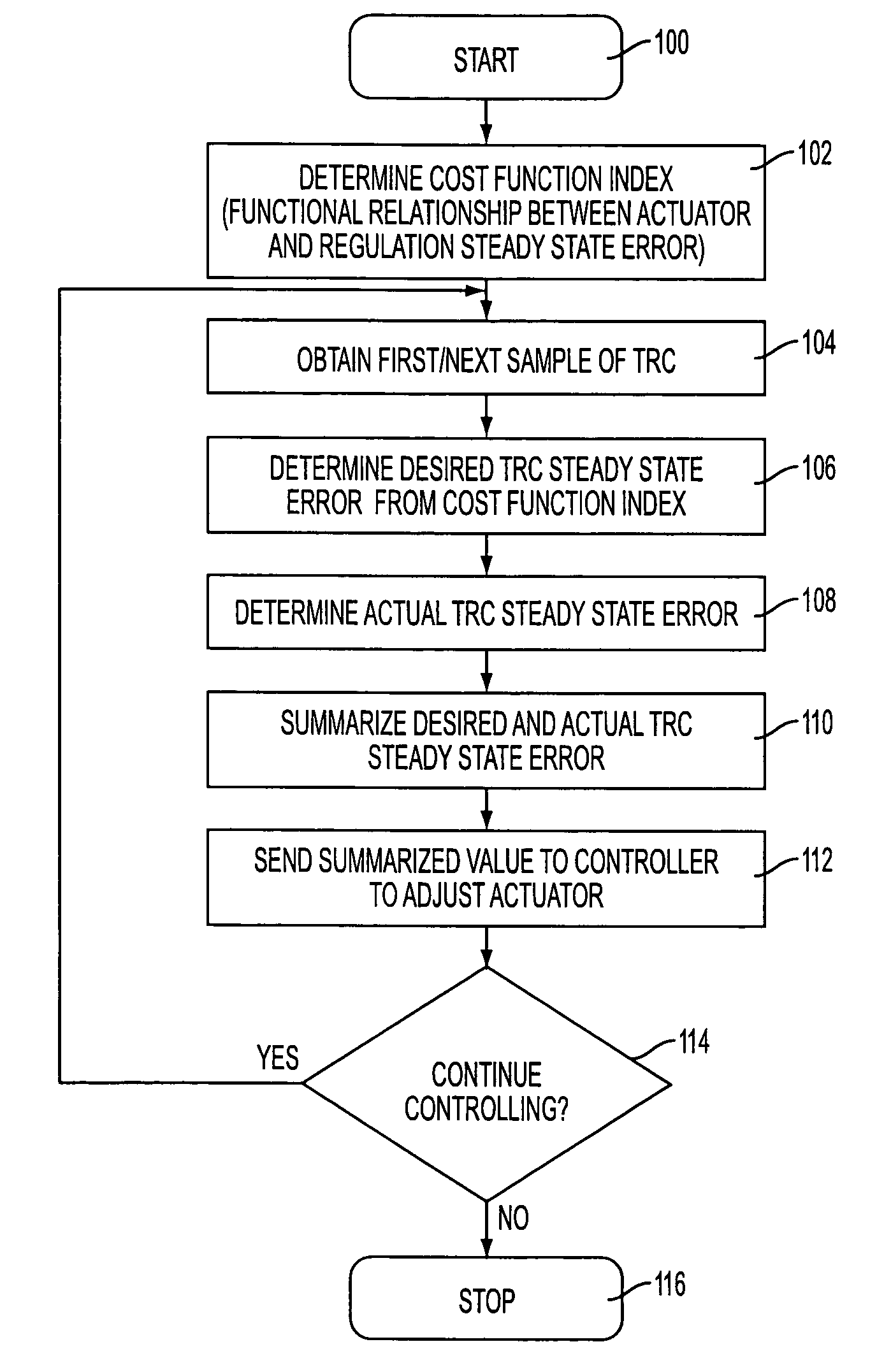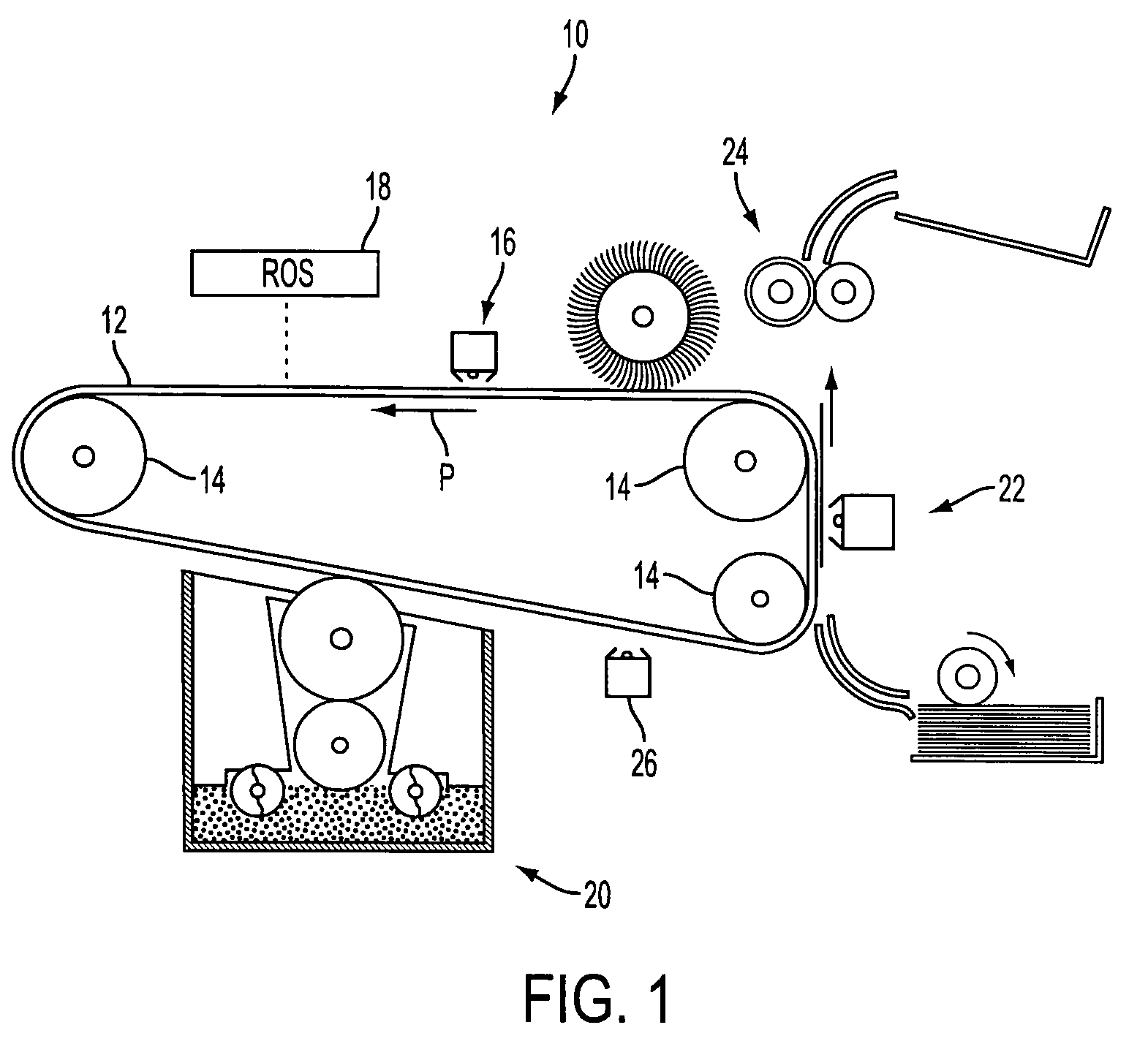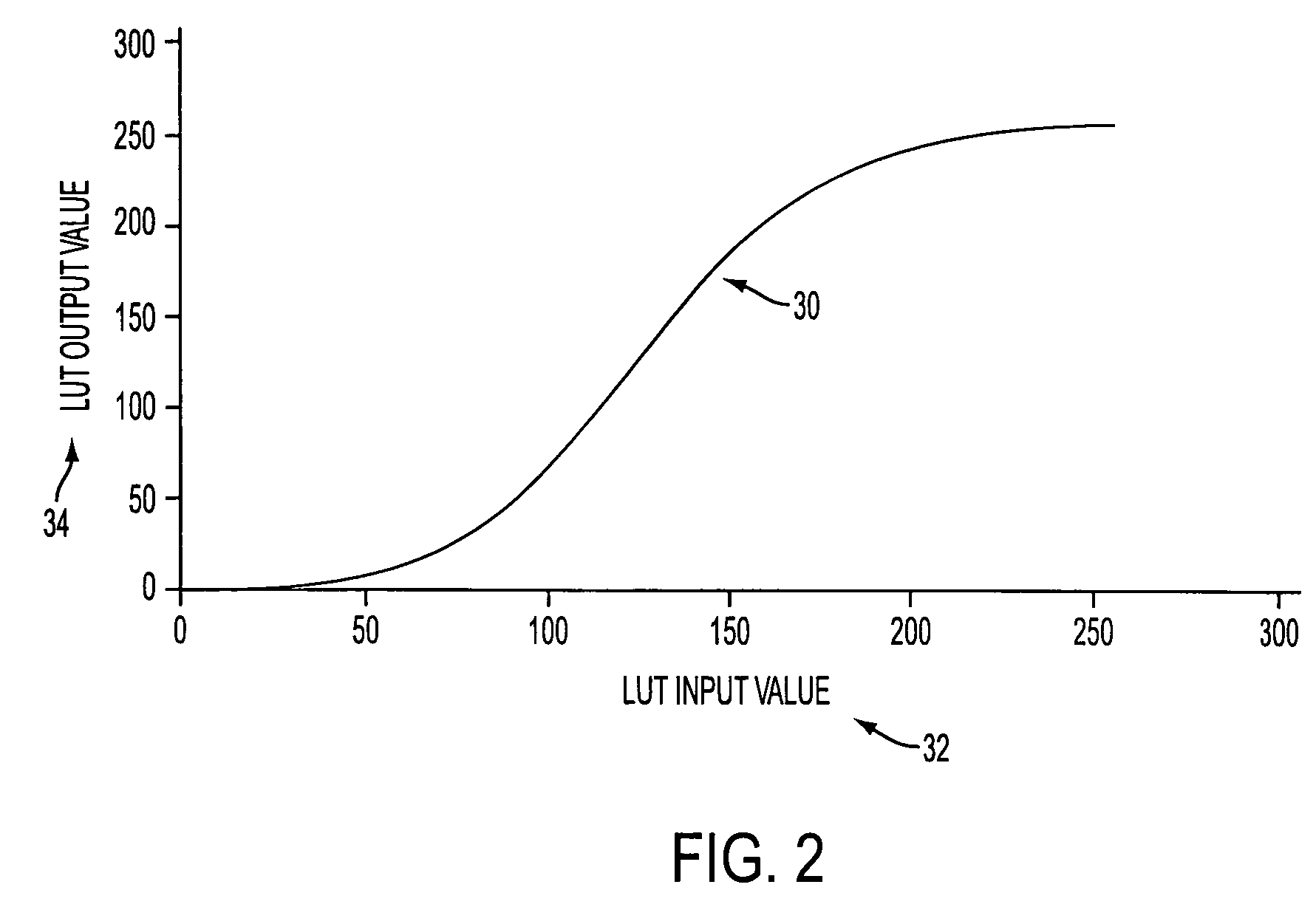Tone reproduction curve (TRC) target adjustment strategy for actuator set points and color regulation performance trade off
a tone reproduction curve and target adjustment strategy technology, applied in the direction of instruments, electrographic process devices, optics, etc., can solve the problems of insufficient actuators, insufficient latitude to control the entire trc, and objectionable color changes
- Summary
- Abstract
- Description
- Claims
- Application Information
AI Technical Summary
Benefits of technology
Problems solved by technology
Method used
Image
Examples
Embodiment Construction
[0034]FIG. 1 is an exemplary diagram of a printing system 10 that includes a photoreceptor 12 which may be in the form of a belt or drum and which includes a charge retention surface. The photoreceptor 12 may be entrained on a set of rollers 14 and caused to move in a counter-clockwise process direction by means such as a motor (not shown).
[0035]A printing process such as an electrophotographic process must charge the relevant photoreceptor surface. The initial charging may be performed by a charge source 16. The charged portions of the photoreceptor 12 may then be selectively discharged in a configuration corresponding to the desired image to be printed by a raster output scanner (ROS) 18. The ROS 18 may include a laser source (not shown) and a rotatable mirror (also not shown) acting together in a manner known in the art to discharge certain areas of the charged photoreceptor 12. It should be appreciated that other systems may be used for this purpose including, for example, an LE...
PUM
 Login to View More
Login to View More Abstract
Description
Claims
Application Information
 Login to View More
Login to View More - R&D
- Intellectual Property
- Life Sciences
- Materials
- Tech Scout
- Unparalleled Data Quality
- Higher Quality Content
- 60% Fewer Hallucinations
Browse by: Latest US Patents, China's latest patents, Technical Efficacy Thesaurus, Application Domain, Technology Topic, Popular Technical Reports.
© 2025 PatSnap. All rights reserved.Legal|Privacy policy|Modern Slavery Act Transparency Statement|Sitemap|About US| Contact US: help@patsnap.com



